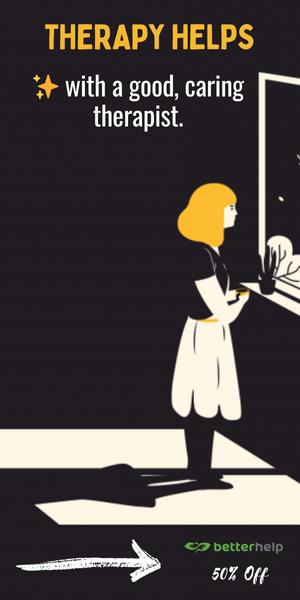I must confess, I have been having difficulty navigating my feelings around the concepts of safety and boundaries as they pertain to my personal and professional life. We have to “protect our boundaries for the sake of safety.” As a practicing therapist – and more so a human being, these words sting my ears. Are these current “fads” in mental health hurting or helping people? I have pondered the significance for each of these notions at great depth. The more I think about, get annoyed, and learn to lean into their meaning, the more I realize they reside on a spectrum for each individual and situation. One implies that we end somewhere and the second that we can only live at the edge of our fears. How utterly confusing when applied to growth and healing. As I see it, true growth is the willingness to live with more openness. I am not talking about the allowance of letting people step all over you or you doing the same to others. I am speaking about the abandonment of black and white thinking and instead noticing the messier lines of relationships and the human experience.
We all live by a set of standards for what we will or will not tolerate. Who we let into our lives and how much we are willing to give and receive. How hard we are willing to fight for what we believe in. When we are willing to say “No! That is enough.” Now more than ever, a lot of the “rules” that we are to live by have been thrust upon us by popular culture, media, Instagram posts, and meme’s urging and educating us on the harm of not having strong boundaries and making sure we feel safe in our interactions. I have noticed a lot of us have started to use this word – boundaries – as an excuse. An excuse to avoid, an excuse to hide, an excuse not to have hard conversations, and an excuse to not be vulnerable. That scares me. I am far from perfect and admit to this way of thinking and defending my vulnerabilities myself. Yet, something I have started to learn in my own journey – is that growth – real growth – often comes from stepping outside these sketched lines. Every time I have been shaken, scared, fearful, broken, and twisted were moments when I didn’t feel safe. As scary and harrowing as this may feel it was also when I ended up expanding, stretching, moving, shedding, and growing into something more magnificent, more multi layered, and more alive than before.
Weaving this into the landscape of psychotherapy can become a slippery slope of cat and mouse. When working with profound trauma the entire scaffolding of what is safe is eroded. The world becomes a hollow balloon and sometimes the perception of people, places, and things that are safe become fuzzy and foggy. Often, you can’t really trust your judgment because it alludes you and leads you either on a dangerous path or an empty space of more grief. This is because trauma is in itself a destroyer of safety. It is the aloneness of its darkness that seeps like venom into every pore and manifests into unhealthy relationships, addictions, mental and physical illness, emotional unavailability, and even numbness. So how do we as both therapists and human beings cultivate both safety and open vulnerability when they seem so counter-intuitive? And do some boundaries get in the way of the quests to foster deep human connection?
My profession is rife with the word “boundaries”. The word is so overused that the mere mention of it has started to produce a cringe worthy, stomach turning, reflex deep in my belly every time I hear it. “Make sure you don’t cross any ethical boundaries,” “That’s a possible boundary violation!” “Are you sure we aren’t crossing any boundaries?” “I don’t want to overstep your boundaries when I ask …” and the list continues. Part of our field has become so engrossed in the risk-management and ethics considerations of everyday practice that any interaction with clients is filled with anxious thoughts of “am I doing the right thing or am I possibly going to get in trouble?” Are there “wrong-doers” in our profession? Of course there are but it is not bad therapists that cause harm, it is bad people, who happen to be therapists. There seems to be a loss of flexibility, flow, and humanness when living in this zone. The very notion that I put up a fence around any type of interaction that is deemed outside this imaginary grid feels confusing and rigid to me and is a process that takes the person out of the relationship for the sake of the profession.
Fresh out of school, I held to the premise that I would need to be somebody else when working with my people – to put on my “therapist” hat and stay firmly planted in this boundary net. That fell away extremely quickly as I learned that for the most part I am terrible at pretending. I am terrible at not being totally and completely myself. The faster I leaned into this truth and noticed when I felt the need to act, the deeper and clearer my work with my clients became. Playing the part of the therapist I thought I was supposed to be would have probably made my path easier and less emotionally invested – and may have even won me an Oscar. When I dropped the act, I realized that it wasn’t me and them – it was us. The make-believe boundary I was so delicately tipped toeing around only made us weaker in the long run. It gave the notion that I knew there was some kind of divide and we had to play the part of therapist and patient in this utterly bewildering bond. What if we came into this relationship as just two human beings who are mutually going to go on a journey of discovery and accompaniment? How do we as therapists and human beings create a space in this world where we equally notice each other’s experience and vulnerability and fully embrace love?
Merriam Webster defines safety as “freedom from harm or danger,” and for some of us that work with complex trauma this is the cornerstone and bedrock of treatment. The very essence of repeated traumatic experiences is the erosion of safety in every facet of one’s life – especially in relationships, sometimes at a subconscious level that is layered under defenses and protective parts that are clamoring to keep people stuck in perpetual survival mode. A boundary is “something that indicates or fixes a limit or extent” – in essence the place where one thing ends and the other begins. In relationships it can be viewed as how and what your rules are around how close you allow others to get to you, and the limits you set forth on your own wellness and individuality, how much you are willing to give and take, and knowing who you are outside of what others and the world expects of you.
At the same time we know that the very essence of healing and movement through life is love. We like to speak of love as a safe cocoon that envelops you and holds you. Yet, in reality – love in all its glory is so richly textured, so deeply complex, and so terrifying because it asks us to do something unspeakable: surrender. So, here we are teaching our people that they have to feel safe and set firm boundaries in relationships. Yet, at the same time telling them to let love in – which asks them to give up control and not feel safe, attach and blend with another as they blur these boundaries so they can let love in. Contradiction, anyone?
How do we embrace the two jarring concepts of safety and boundaries and work with them in the contexts of the therapeutic relationship and in our own lives? There is a differentiation when it comes to the concept of how someone receives and gives love – or – holds on to and enforces boundaries and safety. One is through “being with” and the second one is “doing for”. So much of psychotherapy and its teachings guide us in how to be with our people. It teaches us how to sit with them, how to notice the minute nuances of their body, their language, their tone of voice. So much on how to embody loving kindness, presence, and being a “safe container” for another’s suffering, loss, trauma, and life story. But I think there is an entirely different way of being that is equally as important and doesn’t get as much air time– which plays directly in the standards of boundaries, safety, and nurturing love. This is the act of doing.
It was a chilly December morning in my office in New Jersey and I was sitting in a client session when all of a sudden the power went out. Lights, sound machines, computers all went “poof”! In my panic I darted outside to see what was going on only to find that the entire township was out of power and nobody knew when it would be back on. Of course my next session was virtual and I couldn’t have it on my trusted computer because there was no Wi-Fi. Since I am technologically unsavvy it took me a good 20 minutes to figure this out and I was able to have the haphazard session on my phone. Thank goodness this was someone I had been working with for many years and my buffoonery and technological ineptitude made for some good laughs during the session. As the power in the building was still not on, I began to get cold. Very cold. I grabbed my coat and put it over myself as a blanket, shivering as I spoke during the session. Soon after I ended the virtual session and was preparing to go out to grab lunch, my phone buzzed with a text message. It read: “DoorDash is on the way with a delivery for you from Dunkin Donuts” and a message “Please don’t freeze.” I burst out crying. My precious client sent me hot chocolate to warm my bones and hug my frustrated heart. I felt such a rush of love and gratitude for this kind gesture that my core was bubbling with warmth and affection for the remainder of the day, no matter how crummy. I reflected on this later. What did this small act of kindness say to me? Why did it fill me with so many feelings? The words that keep popping up are “I care.” “I thought about you” “You matter.” This act of doing vs. just being did more for me and then any words or empathetic glances would have in that moment.
In knowing how it felt to be on the other end of this receiving – how do you think our people may feel when we are more than just being but also doing? I used to be afraid to tell other therapists that I “do” for clients a lot. Texting to check in between sessions, sending them a book they may like, accompanying them to an anxiety provoking appointment, gifting something that they once told me about, and openly telling them that I love them. This is where boundaries and safety come in. When we cultivate and create a safe nest for our people in a relationship that can be nurtured and loved, which is when the walls start to crumble. It takes a really long time for some because the wounds are deep, and we make a multitude of mistakes and missteps along the way – heck, some days I feel like I have no idea what I’m doing. For some it never comes. However, sometimes walking past that delicate “boundary” line and doing something that shows the other “I care” can be a catalyst to let that love in.
And what about culture? Are stricter, less dependent boundaries just a bi-product of the westernized, patriarchal society that we work and live in? Would these concepts even hold water in tribal communities, or cultures that emphasize togetherness and interdependence? Are these people any more mentally “unhealthy” because they survive by depending on each other? If I were to go back to my native Georgia (the country, not the state) and try to explain the concept of “co-dependence” to them, they would either look at me with disdain or hysterically laugh. Dependence on each other is how we survived. The current trend in psychotherapy has also moved us away from family therapy and instead focused more on the individual client, forgetting how much of a system we live in and how inter-connected and related we all are in our families and communities. RCT (Relational Culture Theory) born through the eyes of Jean Baker Miller, MD stresses the importance of this interdependence to thrive in relationships – both outside and inside the therapy room, and that the greatest cause of human suffering is chronic disconnection (Walker & Rosen, 2004).
So much of western culture has put forth “boundaries” as a safe-keeper around our hearts and wanting anything more than that equates to being seen as pathetic and needy. This shames us when we feel neediness. When in fact it’s a deep, natural desire of wanting to connect. This embarrassment causes us great suffering and pain and in turn makes us disconnect even further. This is so ingrained in our society and way of being that the very essence of being open in this way is a shock to our nervous system and we recoil back, hide, avoid, and play the dance of all our familiar defenses.
The South African concept of Ubuntu stresses the necessity of interdependence, fluid boundaries, and relationships to thrive. We are on this journey together, not separate. So that even us – the healers of the world – can also be the ones healed – through the mutuality of truly getting to see each other. A magnificent way this is illustrated in the Zulu tradition is how one greets another. The greeting begins by saying “Sawubona” –I see you and the person replies “Sikhona” – I am seen. When I heard about this concept I felt my heart expand and my eyes fill with tears. It is the modern science of mirror neurons bubbling up and reminds us to slow down and notice each other, even during a simple hello. David Whyte (2014) further emphasizes this point in his magnificent book Consolations about friendship – which also applies directly to the work we do as therapists: “The ultimate touchstone is not improvement, neither of the other nor of the self: the ultimate touchstone is witness, the privilege of having been seen by someone and the equal privilege of being granted the sight of the essence of another.” Is that not what we aim to do with our people? And in turn that is what we become. Not healers but “seers.”
This is where I start my reality check. Is this my way of making excuses and enabling the part of me that is a co-dependent, people-pleaser? Some (including myself) argue a resounding yes! Perhaps sometimes I am, but I have come to a place where I am not afraid to say I need love and connection to survive. We all do. I urge therapists – and more importantly human beings to continue and work with our own hearts and allow them to shed and open more and more – as we are willing to move past some of the structures that our world has set before us. I urge us to always let humanity win.
As I so often do, I opened my journal one morning and wrote “I don’t want to stay safe, I want to remain open.” I don’t share much on social media but my intuition guided me to put this message out there. A friend messaged me saying she loved what I was saying and added, “Perhaps when you feel safe, that is when you CAN remain open.” Ah, and there it is. And so, in our treatment rooms we foster safety – by either being or doing – and perhaps that allows one to be more open and then brave enough to be that in other areas of life. In doing that we realize that we are not as separate as we would like to believe but part of a great collective consciousness that is always so much stronger and healthier when we have each other than when we don’t.
Some of the most profound moments I have had with my clients was when there was movement outside of the lines. Being mangled with the rigid structures is what fuels the power dynamic, not the other way around. I have to remind myself to keep my core fluid, be curious, call myself out on my shit, and be ok with occasionally messing up. But to be locked in? To define life and love by a strict line or boundary is like saying that the planet ends and begins and has fences that separate its structures. That Mother Nature is unbending and firm when in reality it flows from the oceans and the streams to the beaches and the valleys to the forests and the mountains like one continuous beautiful masterpiece. Look how harmonious it can all be. Of course, Mother Nature, much like us humans also destroys with its earthquakes and tornados, avalanches, and monsoons – but as much as it does it also heals and regenerates and longs to flow back into harmony with its own self. Just like us. Just like humans. Messy. Destructive. Spectacular. Separate yet better together. Part of one masterpiece.
Works Cited
Harilall, R., 2022. I see you. Lion’s Roar, March 2022, 29
Merriam-Webster. (n.d.). Citation. In Merriam-Webster.com dictionary. Retrieved February 7, 2022, from https://www.merriam-webster.com/dictionary/boundary
Merriam-Webster. (n.d.). Citation. In Merriam-Webster.com dictionary. Retrieved February 7, 2022, from https://www.merriam-webster.com/dictionary/safety
Walker, M., & Rosen, W. B. (Eds.). (2004). How Connections Heal: Stories from Relational-Cultural Therapy. The Guilford Press.
Whyte, D. (2015). Consolations. Edinburgh: Many Rivers Press.

 Share on bsky
Share on bsky







Read 4 comments and reply